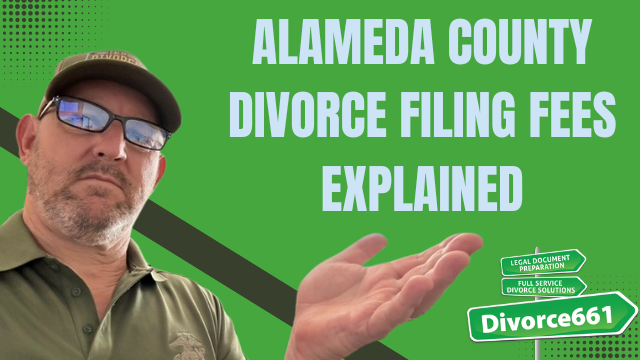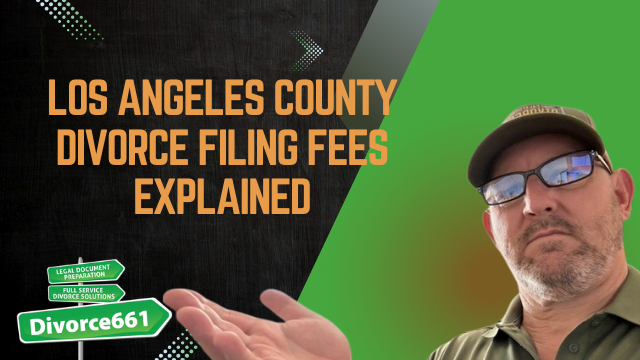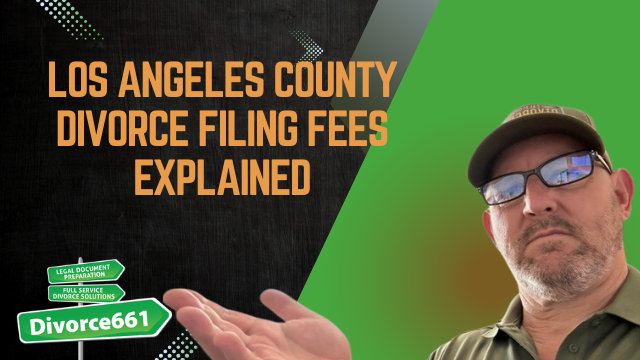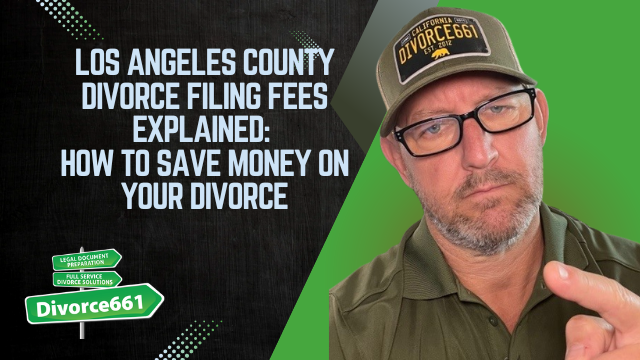Alameda County Divorce Filing Fees Explained
Hi — I’m Tim Blankenship from Divorce661. If you’re getting ready to file for divorce in Alameda County, one of the first questions I hear is: “How much will this cost?” In this post I’ll walk you through the current filing fee, when it’s due, how the mandatory e-filing process works, and how you might qualify to avoid the fee entirely through a court-approved fee waiver.
Quick overview
- Standard filing fee: $435 to start a divorce case in Alameda County
- Who pays: The fee applies statewide across most California courts. It’s required whether you’re the petitioner or (in some cases) the respondent.
- When it’s due: At the time you submit your petition through the court’s mandatory e-filing system
- Fee waiver option: If you have low income or receive certain public benefits, you may qualify to have the fee waived using Form FW-001 (Request to Waive Court Fees)
How much is the filing fee and who pays it?
As of now, the standard fee to start a divorce in Alameda County is $435. That amount is the same across most California courts. Typically the person who files the petition (the petitioner) pays the fee when submitting the initial paperwork. If both spouses separately file documents that require separate filings, each filing may require its own fee.
When the fee is due — mandatory e-filing and payment
Alameda County uses a mandatory e-filing system for most family law cases. That means the filing fee is due when you submit your petition electronically. If you submit paperwork without payment, or if your payment is declined through the e-filing vendor, the court will reject the filing and you’ll need to correct the issue and resubmit.
Practical tip: double-check accepted payment methods with your e-filing vendor and confirm the transaction before assuming your filing was accepted.
Can the filing fee be waived?
Yes — if you have a low income or receive qualifying public benefits, you may be eligible for a court fee waiver. To apply you complete Form FW-001 (Request to Waive Court Fees) and provide details about your financial situation. If the court approves the request, the filing fee and possibly other court-related costs can be waived.
Who typically qualifies?
- People receiving public benefits (for example, Medi-Cal, CalFresh, SSI, or similar programs)
- Those whose income falls below certain limits relative to household size
- Applicants who can demonstrate inability to pay court costs based on income, expenses, and assets
What you’ll usually submit with the waiver
- Completed Form FW-001
- Documentation of public benefits, if applicable
- Recent pay stubs, bank statements, or other proof of income
- A simple declaration of monthly expenses and household size
Every case is different, and the court may ask for additional information. If your waiver is approved, your filing will proceed without payment and other costs may also be waived.
A real example
A client in Alameda reached out worried they couldn’t afford the $435 filing fee. After we reviewed their finances, we helped them apply for a fee waiver. It was approved—saving them hundreds and allowing the case to move forward without delay.
That’s exactly the kind of result the fee-waiver process is meant to provide: access to the court system even when paying fees would create a hardship.
How Divorce661 helps
At Divorce661 we do more than prepare your paperwork. We guide you through the filing logistics so you don’t get rejected for a simple payment or formatting issue. That includes:
- Completing and submitting Form FW-001 and supporting documents
- Handling mandatory e-filing requirements and vendor payments
- Ensuring forms are filled out correctly so filings are accepted the first time
- Flat-fee services and clear pricing so there are no surprises
Checklist: Preparing to file in Alameda County
- Confirm the filing fee amount (currently $435) and your filing method (e-filing required)
- Gather financial documents: pay stubs, benefit letters, bank statements
- Complete Form FW-001 if you believe you qualify for a fee waiver
- Verify payment method with your e-filing vendor if not using a waiver
- Submit your petition and any fee-waiver request together to avoid rejection
Final thoughts and next steps
Filing for divorce can feel overwhelming, especially when you’re worried about upfront costs. If you’re in Alameda County and need help navigating filing fees, fee waivers, or the mandatory e-filing process, I’m here to help. Visit Divorce661.com to schedule a free consultation — we’ll review your situation, explain your options, and help you move forward with confidence.
If you have questions about fee waivers, filing timelines, or what documents you should prepare, drop them below or bring them to your consultation — we’ll walk through it with you step by step.






